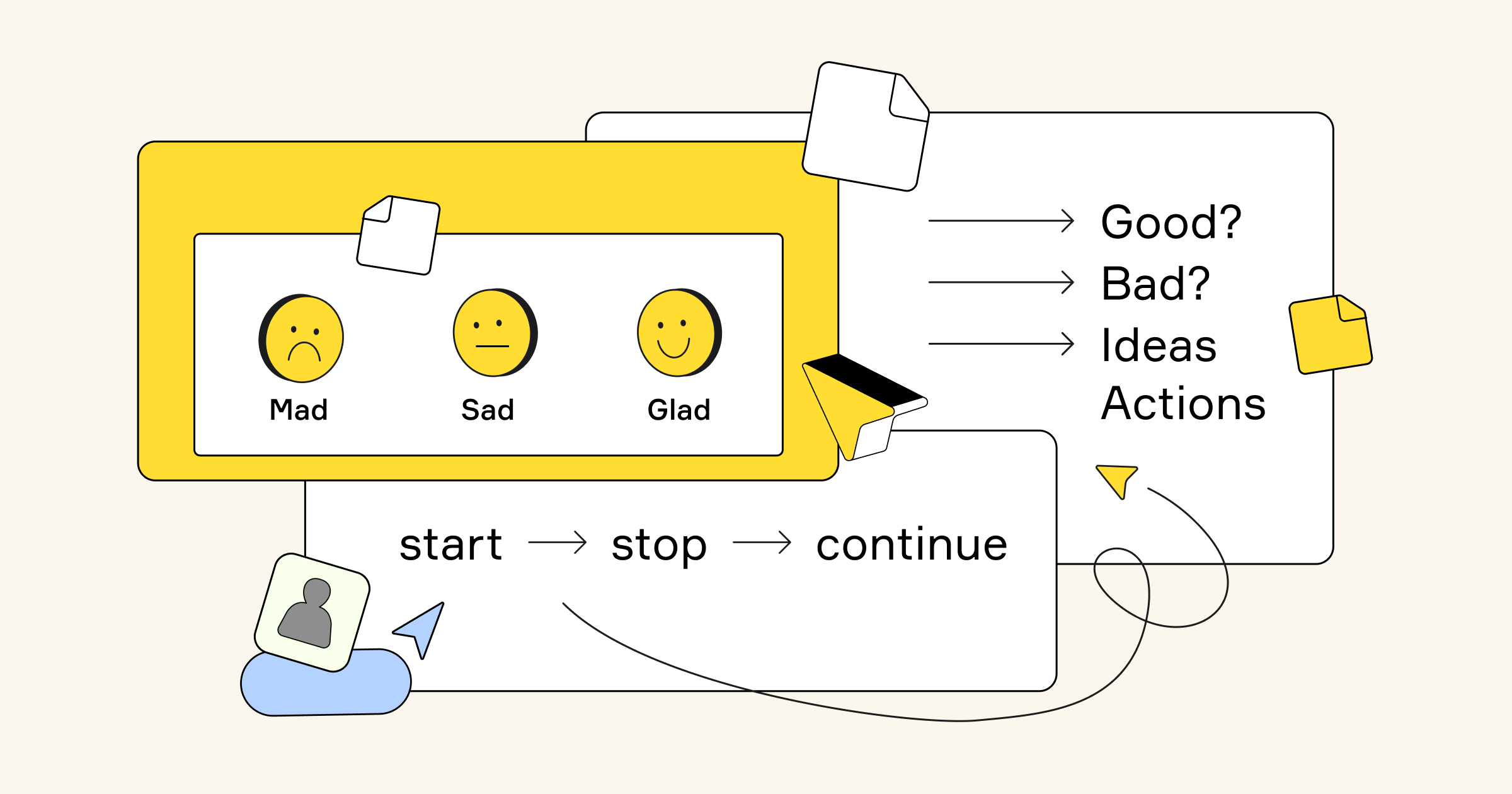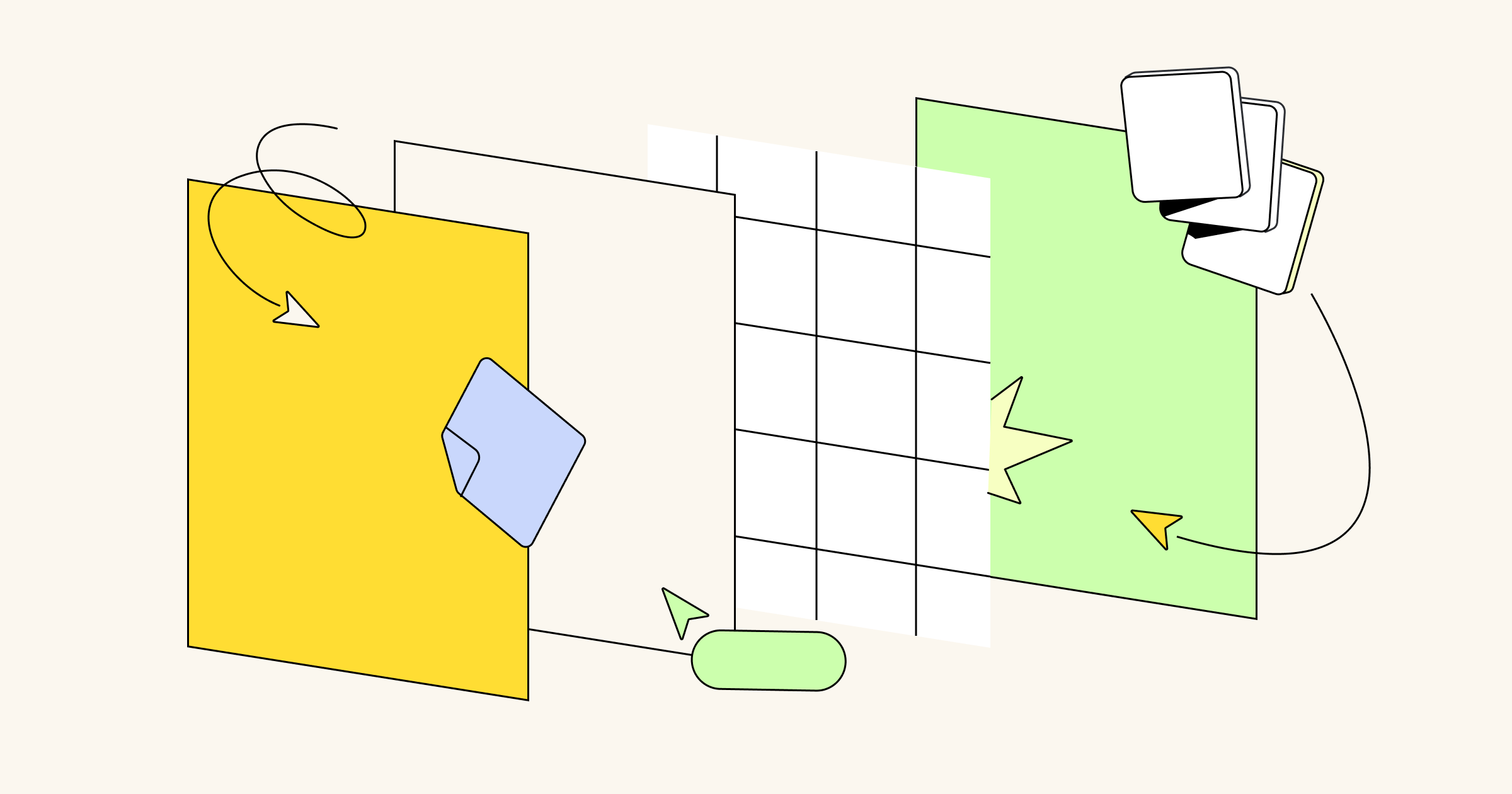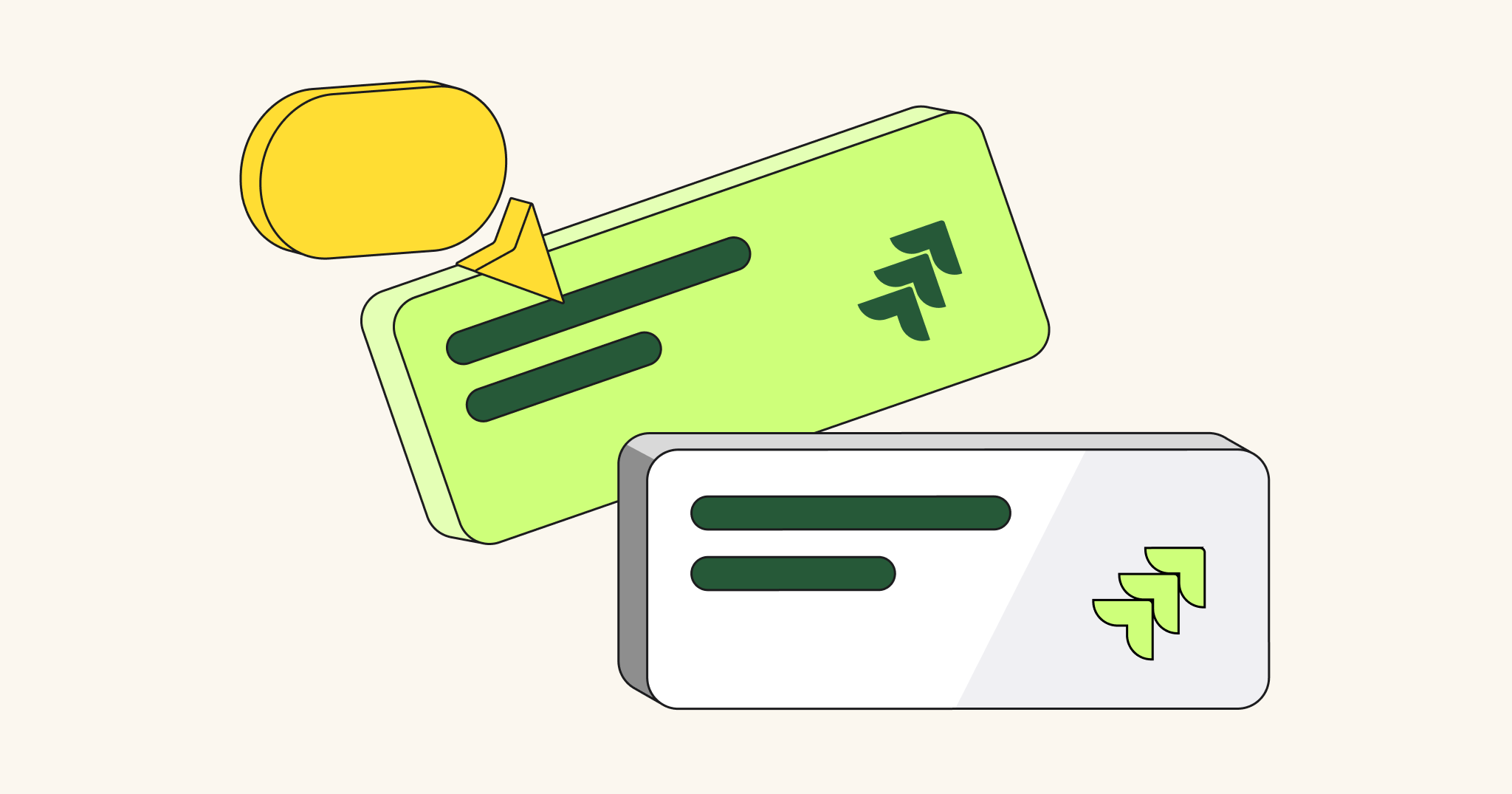I never thought I’d be such a huge fan of team retrospectives. I used to dismiss them as irrelevant for non-engineering teams, or as a twin of the post-mortem (which typically only takes place when something goes wrong, and too often involves feelings of regret and blame).
But my attitude changed immediately when I started taking part in retros at Miro. The company’s philosophy of continuous improvement is displayed in our core value of “Create a better version of ourselves every day.”
Sarah is passionate about positive collaboration, team-building, and content.
And in practice, one of the ways we commit to always learning and getting better is by running retrospectives: on the team level, the company level, and on specific projects.
“In my opinion, the retrospective is the most important Agile ceremony – and it’s often the one that most teams skip. It empowers teams to inspect and adapt to the way they work rather than the work itself,” says Vanessa Sequeira, head of people design at Miro.
The experience is positive, energizing, and insightful. My team runs them every quarter, and at the end we always choose two or three focus areas with specific action items and owners. (This quarter, it’s introducing remote-friendly social hours for team bonding and inviting senior leaders to AMAs for visibility into company priorities.) I am now a retro believer!
How to choose a retrospective template
For something so straightforward, it can sometimes feel like there is a dizzying array of different retros to choose from. How do you know which one to go with? It turns out that the answer is “it depends,” and what you get out of it largely depends on what you put into it.
“The framework you choose is whatever gets a good result from the team,” explains Pete Lim, Agile Coach at Miro. “As a facilitator, I like to start with something really simple and keep doing the same one for a while so the team gets comfortable with it and doesn’t have to spend the mental energy learning a new format.”
At the same time, teams that run frequent retros might get fatigued and need a new approach.
“Changing up retro formats is important. Otherwise, teams start going through the motions – even with good facilitation,” advises Vanessa Sequeira.
That said, we all have our preferences and favorites. Check out some retrospective template recommendations, based on what’s worked for different teams and situations at Miro.
Start Stop Continue Retrospective
Good for: identifying specific actions to take, looking both backward and forwards
Start Stop Continue is a very action-oriented retro framework that helps teams determine what past actions are worth stopping or continuing, and what new ideas are worth giving a try. We used this template as the basis for the 400-person retrospective we ran at our 2020 virtual offsite (see the flock of buzzing cursors above for a peek into what such a massive feedback exercise can feel like – mad energy!).
I love the simplicity of Start Stop Continue. One modification I often make is to reorder the steps, so “start” is at the end. I’ve found that people find it easier to think about what already exists – both the good (“continue”) and the bad (“stop”), before venturing into uncharted territory (“start”).
Mad Sad Glad Retrospective
Good for: discovering the emotional impact of a project, sharing individual perspectives
In case you couldn’t tell from the name, this retro template is about feelings. While most other approaches focus on what happened and what people did (or didn’t do), this one delves into the emotional journey of your team as they were carrying out their jobs.
To help people relax, I usually add a few emotion emojis and even gifs, but – of course – you should make sure you consider the vibe of the group to gauge whether pop culture references will be well received (or understood by all, particularly across cultures).
What So What Now What Retrospective
Good for: creating action items specifically tied to issues that were identified
This exercise was created for a learning environment, but it’s also great for teams. The structure is built around an event (“what”), the implications of that event (“so what”), as well as next steps (“now what”). You can use this framework to make sense of work done, a project that was delivered, or any feedback received.
What makes What So What Now What a bit different is that each item has its own story that flows through each of the three categories. So, each “what” has a corresponding “so what” and “now what” — so you can tie the entire story together and make sure you have next steps for everything.
Pete Lim notes that it’s important to narrow your focus, to make sure you actually follow through on these actions. He recommends brainstorming during the “what” stage, then voting on which 3-5 items you want to discuss. “By the time you get to ‘now what,’ you should commit to no more than 3 actions, or you likely won’t do them,” he adds.
He also likes to add a timeline to the “what” phase to help people visualize what happens, as well as using colors to indicate whether the thing was positive or negative.

4Ls Retrospective
Good for: focusing on learning
This retrospective is handy for when you want to take your team’s pulse about how a project, sprint, or quarter went, with a focus on growth and learning. The four quadrants are usually Loved, Learned, Lacked, and Longed for — though some teams make modifications.
“A lot of people can’t distinguish between ‘lacked’ and ‘longed for,’” Pete Lim explains. I’ve experienced this confusion first-hand: trying to decide which quadrant to put a sticky note in can distract you and waste precious reflection time.
One suggestion is to substitute “loathed” for “lacked.” However, I’ve seen some people hesitate to use such a strong label (do you really loathe the weekly status meeting, or is it just unproductive?). So, one other option is to recognize that you might not be able to be 100% alliterative and use a milder term that doesn’t necessarily start with L.
Sailboat Retrospective
Good for: teams who are in a retro rut
The Sailboat Retrospective is an engaging way for a team to reflect on what went well, what helped them achieve their goals, what held them back, and what potential risks they see ahead. The metaphor is that the team is on a boat together, headed toward an island, but they must navigate clouds and winds, try not to be slowed by anchors, and avoid rocks and pirates along the way.
“This worked really well on my team once we got a bit bored with our standard retro,” says Kristin Leich, product marketing manager for Miroverse and Templates. “The theme is fun, especially when you task someone with drawing the sailboat.”
Even when using a template, you always have the option to let your team customize their board, like adding your company logo to their boat or adding visual elements for different types of risk.
Atlassian’s Team Retrospective
Good for: teams who are doing a retro for the first time
We love it when a company puts its own stamp on a framework they’ve adapted to work best for its needs. We highlight these examples in Miroverse, and try to add our own examples there as well.
Atlassian developed this retro template specifically for groups of 4-8 people to discuss what went well and what needs improvement, and to identify the next steps to take. It’s a simple framework, done well.
Anna Dvornikova, learning program design lead at Miro, says her team adapted this template to add areas called “celebrate” and “questions.”
“It makes our discussion more balanced — we give individual and team shoutouts and feel more open to sharing some tricky questions. This helps us have more meaningful, vulnerable conversations and embrace the explorer mindset rather than the judging/assessment mindset,” she says.
Facilitating Agile Retrospectives Workshop
Good for: facilitators who want a ready-made retro workshop kit
Here’s Miro’s own take on a longer team retrospective workshop. In this board, PMM Lindsey Meredith brings together three activities – three icebreakers, the 4Ls retro, and the Perfection Game – as a starter pack if you want to lead a discovery session from start to finish. There’s even an intro presentation and a Q&A area already set up.
Go forth and reflect!
There are so many benefits that can come from running a retrospective, from developing a deeper shared understanding of working styles and an appreciation of individual perspectives to gathering a list of specific action items to improve how you work together.
Visit Miro’s template library and Miroverse community template gallery to get inspired and find specific frameworks you can start using right away.



